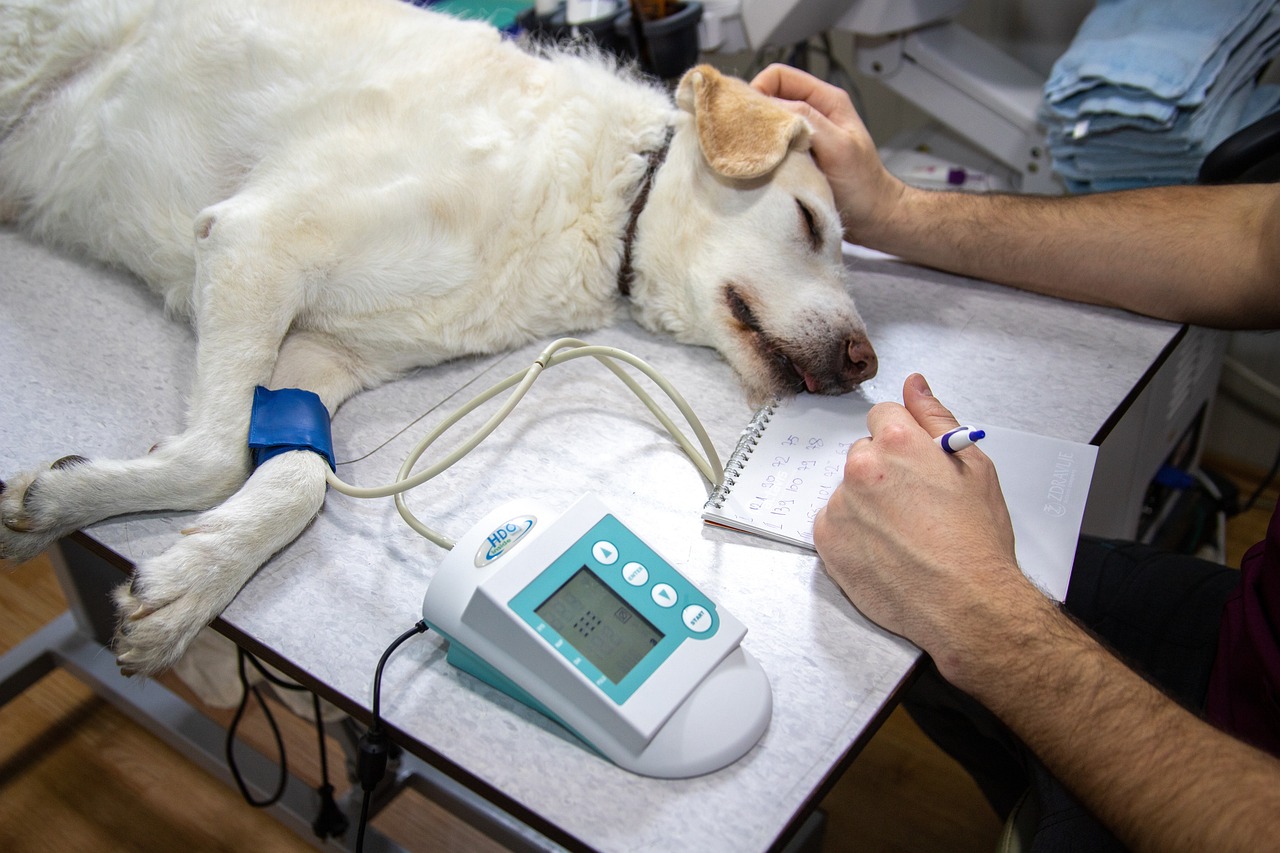Welcoming a pet into your home is a joyous experience, but it also comes with the responsibility of ensuring their well-being. Just like humans, pets can encounter health emergencies and accidents. Being prepared to provide first aid can make a significant difference in the outcome of these situations. In this comprehensive guide, we will explore common pet health emergencies, accidents, and the essential first aid treatments to address them, emphasizing the importance of proactive pet care.
Choking
Symptoms:
- Difficulty breathing
- Pawing at the mouth
- Distressed behavior
First Aid:
- Assess the Situation: Stay calm and approach your pet cautiously.
- Open the Mouth: Gently open the mouth and check for any visible obstructions.
- Heimlich Maneuver: For dogs, stand behind and place your hands just below the ribcage, applying upward pressure. For cats, hold them upside down and give gentle back blows.
- Check Airway: After dislodging the object, check the airway and seek veterinary attention.
Bleeding
Symptoms:
- Visible blood
- Blood-soaked fur or bandages
First Aid:
- Assess the Wound: Use a clean cloth or bandage to apply gentle pressure to the wound.
- Elevate the Injured Limb: If possible, elevate the injured limb to minimize blood flow.
- Apply a Bandage: Use a sterile bandage or cloth to cover the wound.
- Seek Veterinary Attention: Even minor cuts may require professional care to prevent infection.
Heatstroke
Symptoms:
- Excessive panting
- Rapid heartbeat
- Weakness or collapse
First Aid:
- Move to a Cool Area: Immediately move your pet to a shaded or air-conditioned area.
- Cooling Measures: Apply cool, not cold, water to their body, especially the paws and head.
- Offer Water: Allow them to drink small amounts of cool water.
- Seek Veterinary Help: Heatstroke is a severe condition requiring immediate veterinary attention.
Poisoning
Symptoms:
- Vomiting
- Diarrhea
- Seizures
First Aid:
- Identify the Poison: Note any potential toxins your pet may have ingested.
- Contact Poison Control: Call your veterinarian or a poison control hotline for guidance.
- Induce Vomiting: If instructed, induce vomiting using hydrogen peroxide (only under professional guidance).
- Transport to the Vet: Seek immediate veterinary attention for proper treatment.
Seizures
Symptoms:
- Uncontrollable shaking
- Loss of consciousness
- Drooling or foaming at the mouth
First Aid:
- Ensure Safety: Keep the environment clear of objects that could harm your pet during a seizure.
- Time the Seizure: Note the duration of the seizure.
- Comfort Your Pet: Speak softly and gently stroke them once the seizure subsides.
- Seek Veterinary Attention: Recurrent seizures may indicate an underlying health issue that requires professional evaluation.
Fractures or Broken Bones
Symptoms:
- Limping or favoring a limb
- Swelling or deformity
- Pain or vocalization when touched
First Aid:
- Immobilize the Limb: Use a splint or bandage to immobilize the injured limb.
- Apply Cold Compress: Reduce swelling by applying a cold compress to the area.
- Transport Safely: Move your pet gently onto a flat surface and transport them to the vet.
- Pain Management: Avoid giving over-the-counter pain medications without veterinary guidance.
Insect Bites or Stings
Symptoms:
- Swelling at the site
- Redness and itching
- Difficulty breathing (in severe cases)
First Aid:
- Remove the Stinger: If applicable, use a credit card or blunt object to scrape away the stinger.
- Apply a Cold Compress: Reduce swelling by applying a cold compress.
- Administer Antihistamines: Under veterinary guidance, administer a pet-safe antihistamine.
- Monitor Breathing: If your pet shows signs of difficulty breathing, seek immediate veterinary attention.
Eye Injuries
Symptoms:
- Squinting or excessive blinking
- Redness or swelling around the eye
- Discharge or cloudiness
First Aid:
- Flush the Eye: Rinse the eye with sterile saline solution or lukewarm water.
- Restrain if Necessary: Use a cone or makeshift barrier to prevent your pet from rubbing their eye.
- Seek Veterinary Attention: Eye injuries can be serious and require professional assessment.
- Avoid Medication: Do not apply over-the-counter eye drops without veterinary guidance.
Allergic Reactions
Symptoms:
- Swelling, especially around the face
- Hives or rash
- Difficulty breathing
First Aid:
- Identify the Allergen: If possible, remove your pet from the source of the allergic reaction.
- Administer Antihistamines: Under veterinary guidance, give a pet-safe antihistamine.
- Monitor Breathing: If signs of respiratory distress occur, seek immediate veterinary attention.
- Follow Up with Vet: Even if the reaction appears mild, consult your veterinarian for guidance.
Respiratory Distress
Symptoms:
- Rapid or labored breathing
- Coughing or wheezing
- Bluish tint to the gums or tongue
First Aid:
- Check Airways: Ensure there are no obstructions in the airways.
- Positioning: Keep your pet’s head and neck in a straight line.
- CPR: If your pet stops breathing, perform CPR (cardiopulmonary resuscitation).
- Seek Immediate Veterinary Attention: Respiratory distress is a medical emergency requiring professional intervention.
Being equipped with knowledge and first aid skills can make a significant difference when faced with common pet health emergencies. The key to effective pet care is preparedness. Regularly review and update your first aid knowledge, ensuring you have essential supplies on hand.
Remember, while first aid measures can stabilize a pet in an emergency, professional veterinary care is indispensable for a comprehensive diagnosis and treatment plan. Always consult your veterinarian for guidance on specific first aid techniques and to address any underlying health concerns your pet may have. By staying informed and proactive, you contribute to the overall well-being of your beloved furry friend. Prioritize pet health, and you’ll be better prepared to handle unexpected situations with confidence and care.

